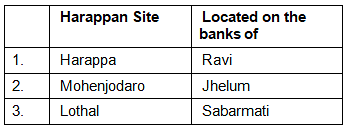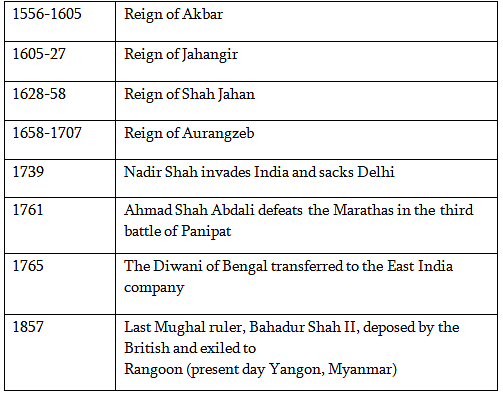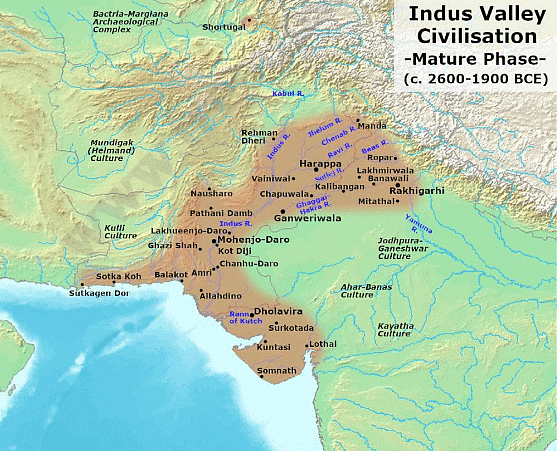GPSC Prelims Paper 1 Mock Test - 7 - GPSC (Gujarat) MCQ
30 Questions MCQ Test GPSC Mock Test Series 2024 - GPSC Prelims Paper 1 Mock Test - 7
Which of the following steps were taken by rulers in the medieval times to earn support of their subjects?
Declaring their close relationship with god through titles like “Shadow of God”.
Constructing public buildings like markets and water tanks.
Offering patronage to the learned and pious people.
Select the correct answer using the code given below.
Declaring their close relationship with god through titles like “Shadow of God”.
Constructing public buildings like markets and water tanks.
Offering patronage to the learned and pious people.
Consider the following statements:
Trabeate style of architecture was used in India for construction since Harappan civilization.
Limestone cement was a new technological development witnessed during the medieval Age.
Which of the statements given above is/are correct?
Trabeate style of architecture was used in India for construction since Harappan civilization.
Limestone cement was a new technological development witnessed during the medieval Age.
| 1 Crore+ students have signed up on EduRev. Have you? Download the App |
With reference to Pre-Mauryan Period, consider the following statements:
-
Village Headman was known as Gramini
-
Use of Iron began in India from the times of the Indus Valley Civilization.
Which of the statements given above is/are Correct?
Village Headman was known as Gramini
Use of Iron began in India from the times of the Indus Valley Civilization.
Consider the following statements regarding Pre-Historic India:
Stone tools were used for
Digging the ground to collect edible roots
Stitching clothes made out of animal skin
Making spears and arrows for hunting
Which of the statements given above is/are Correct?
Which of the following sites are identified as a Neolithic Sites?
Daojali Hading
Paiyampalli
Kurnool caves
Inamgaon
Select the correct answer using the code given Below.
With respect to women’s condition in Ancient India, consider the following statements:
There was no female Upanishadic thinker in Ancient India.
Women were not allowed to join Buddhist Sangha.
Which of the statements given above is/are Incorrect?
Arrange the following bhakti saints chronologically:
Narsi Mehta
Basavanna
Tulsidas
Manikkavasagar
Select the correct answer using the code given Below.
With reference to the Mahajanapadas, consider the following statements:
The tax was fixed at 1/6th of the produce.
The hunters and gatherers had to provide forest produce to the raja.
Which of the statements given above is/are Correct?
With reference to the Medieval Indian history, which one among the following events happened earliest?
Consider the following statements with regard to the Harappan script:
Harappan writing is found only on the Harappan seals.
Harappan script was Boustrophedon and non-alphabetical.
Which of the statements given above is/are Correct?
With reference to the Sufi movement, consider the following statements:
The khanqah was the centre of social life.
Chishtis practised austerity by maintaining a distance from worldly power.
Which of the statements given above is/are correct?
Consider the following statements regarding Ain-i-Akbari:
It was part of Akbanrnama commissioned by Akbar.
It gives detailed accounts of the organization of the court, administration and army.
Which of the statements given above is/are correct?
With regard to the Mehrgarh, consider the following statements:
It is located in the Belan Valley, Uttar Pradesh in northeastern India.
Remains of rectangular houses and several burial sites have been found here.
Which of the statements given above is/are correct?
Which of the following are the reasons behind the Magadha empire being such a power centre in ancient India?
Access to iron tools
Urbanization
Advancement in technology
Political marriages
Select the correct answer using the codes given Below:
Consider the following statements with regard to external trade in ancient India:
Puhar was a port city located on the Eastern coast of India.
Trade with Roman Empire included spices, medicinal plants and textiles.
Which of the statements given above is/are Correct?
Which one of the following statements is not correct about Lingayats?
Consider the following pairs:

Which of the pairs given above is/are correctly Matched?
Consider the following statements:
Mesopotamian texts refer to the Harappan region as Magan.
Harappan Civilization procured Copper from Oman region.
Harappans knew ship-building and communicated with different regions by Sea.
Which of the statements given above is/are Correct?
With reference to the ancient history of India, the term ‘theris’ refer to
Consider the following statements with regard to literary evidences of existence of ideas alternative to Brahmanical ideas mentioned in Dharmasutras or in Manusmriti:
Mrichchakatika, a play written by Shudraka, describes its protagonist as both a Brahmana and a merchant.
Matanga Jataka is a story of a Bodhisattva who is identified as an outcaste, Chandala.
Which of the statements given above is/are Correct?
With respect to administrative units of theVijayanagara empire, arrange the followingin ascending order in terms of size:
- Nadu
- Sthala
- Grama
- Mandalam
Select the correct answer from the codegiven below.
During the Sangam Age, the term ‘uzhavar’ was used for
Consider the following statements regarding the chaityas and viharas:
- Viharas were the places of congregation and worship.
- Chaitayas were the places of residents of monks.
- In the cave tradition of western India, the presence of a stupa at the back of the chaitya was a common feature.
Which of the statements given above is/are correct?
Consider the following statements regarding the king Kharavela:
- Hathigumpha inscription explains about his conquests.
- Jainism enjoyed patronage under him.
Which of the statements given above is/are correct?
With reference to Sufism and its related practices, consider the following statements:
- Sufis are the saints who traveled all over the world to spread the prowess of the Caliphate.
- They established rules for spiritual conduct and interaction between inmates as well as between laypersons and the masters in Sufi khanqahs.
- Qalandars, madaris, malangs, haidaris are some of the Sufis who compiled all the shari‘a laws and propagated the same to their followers.
Which of the statements given above is/are correct?
Consider the following statements regarding Sultan Mahmud of Ghazni
- He entrusted a scholar, Al-Biruni to write an account of the subcontinent.
- Sultan Mahmud of Ghazni was a contemporary of Rajendra I.
- The Chahamana ruler Prithviraja III defeated an Afghan ruler named Sultan Mahmud of Ghazni.
Which of the statements given above are correct?
With reference to the Satavahana dynasty in the Deccan region, consider the following statements:
- Satavahana kings were the first rulers to grant tax-free lands to Buddhists and Brahmanas to gain religious merit.
- Satavahana kings claimed to be Brahmanas but they rejected the four- fold varna system and promoted social equality.
- Satavahana dynasty was founded by Gautamiputra Satakarni by defeating the Kanva dynasty in the post-Maurya era.
Which of the statements given above is/are correct?
Delhi became the capital of a kingdom for the first time under
With reference to the Tripartite struggle of medieval history, consider the following statements:
- It was fought between Pratihara, Rashstrakuta and Pala dynasty.
- The three kingdoms fought for control of the Malwa region which had plenty of resources and was seen as a symbol of prestige and power during the early medieval period.
Which of the statements given above is/are correct?
Consider the following statements regarding the duty of the Muqtis
1. The holders of iqta were called as Muqti.
2. The duty of the muqtis was to lead military campaigns.
3. The duty of the muqtis was to maintain law and order in their iqtas.
4. Muqtis collected the revenues of their assignments as salary.
Select the correct answer using the code given below:
|
20 tests
|



















